What is Carbon Fiber?
Carbon fiber is an extremely strong, stiff and lightweight material, superior in strength to conventional metal materials. It is technically known as a fiber containing at least 95% carbon atoms bonded together. It consists of very thin strands of carbon, even thinner than human hair.
The strands can be twisted together, like yarn and commercially produced ranging from 1.000 filaments (1k) to 3k, 6k, 12k, 24k, 50k, etc. The yarns can be woven together like cloth, which is used to make composite parts.
When used with a bonding polymer, like a stiff resin or plastic, the strengthto- weight ratio (as well as stiffness- to-weight ratio) of carbon fiber is much higher than either steel or aluminum. Carbon fiber is a highly strategic material offering innovative solutions, involving efficient usage of resources, to the world’s primary problems.
Especially because of its light weight, its usage is critical in increasing the efficiency of wind turbines, reducing fuel consumption in all aircraft and vehicles and strengthening infrastructure and structures against earthquakes.
Carbon fiber is the main raw material of high-tech composites used in defense, aviation and space, infrastructure, energy, transportation sectors, is expected to replace metals like steel and aluminum in near future Carbon fiber is widely used globally due to its following advantages over the traditional materials;
• 4 times lighter than steel and 2 times lighter than aluminum and glass fiber,
• 5 times stronger than steel and 2 times stiffer than steel, aluminum and glass fiber,
• Corrosion and fatigue resistance,
• Electricity conductor and heat isolator.
The raw materials used in the production of carbon fiber are polyacrylonitrile PAN, Pitch and Rayon. However, more than 80% of the carbon fibers produced are PAN (Poly Acrylonitrile) based. Carbon fiber was initially used by Thomas Edison in incandescent filament bulbs by enabling carbonization of cotton and bamboo fibers.
However, the first industrial use has started in late 1950s in aviation industry, as the result of a high performance material need for this industry. The high strength of carbon fiber material is due its strong interatomic and intermolecular bonds.
Precursor, which is the raw material of carbon fiber production, goes through polymerization and fiber spinning processes. Oxidation, carbonization, surface treatment and sizing are the four main processes of carbon fiber production.
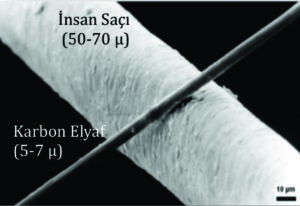
About DowAksa
DowAksa was formed in 2012, combining the strengths of two world class companies: Dow’s materials science expertise with Aksa’s acrylic fiber capacity. As the first and only carbon fiber producer in Turkey,
DowAksa is committed to supply wide range of carbon fiber composites and technical solutions to the defence and aviation sectors. Ipek Project is one of the key initiatives of DowAksa for this industry. The Ipek Project, an advanced carbon fiber-based technology development collaboration supported by the Undersecretariat of
Defense Industries (SSM) and jointly conducted by DowAksa and Turkish Aerospace Industries Inc.
(TAI), was awarded the Technology Development Award by the Turkey Defense and Aviation Manufacturers Association (SASAD). The project’s aim was the development and production of carbon fiber and glass fiber based thermoset prepregs for aerospace (defense?) applications.
Carbon Fiber Use in Defense and Aviation
The unrelenting passion of the aerospace industry to enhance the performance of commercial and military aircraft is constantly driving the development of improved high performance structural materials. Composite materials are one such class of materials that play a significant role in current and future aerospace components.
Composite materials are particularly attractive to aviation and aerospace applications because of their exceptional strength and stiffness-to-density ratios and superior physical properties.
Global carbon fiber consumption, reached 92,600 tons with 10% annual growth rate. Based on 2018 data, the market size reached 2.6 billion dollars in total. The aviation and defense industry consume only 23% of this total amount, yet this amount equals 50% of the total market value.
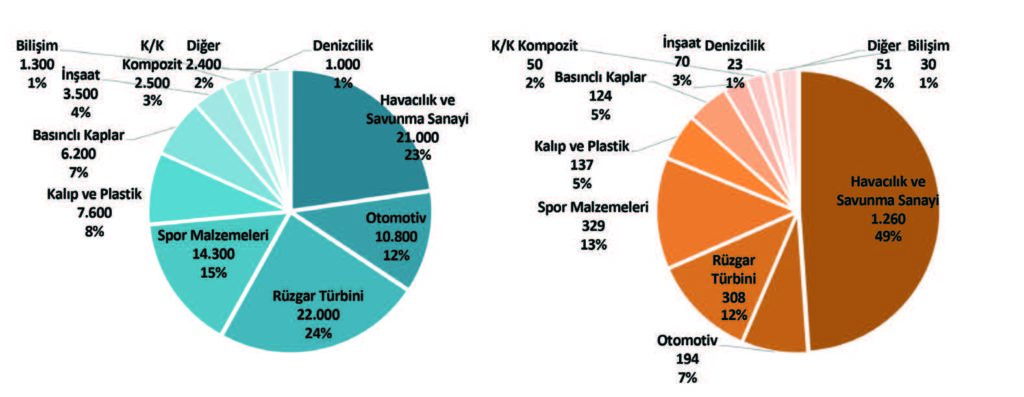
The use of glass fiber composites in commercial aviation started in the 1980s and turned into carbon fiber composites in the mid-1990s. Today, 21.000 tons of carbon fiber is consumed in the aviation sector with an annual increase of 10%.
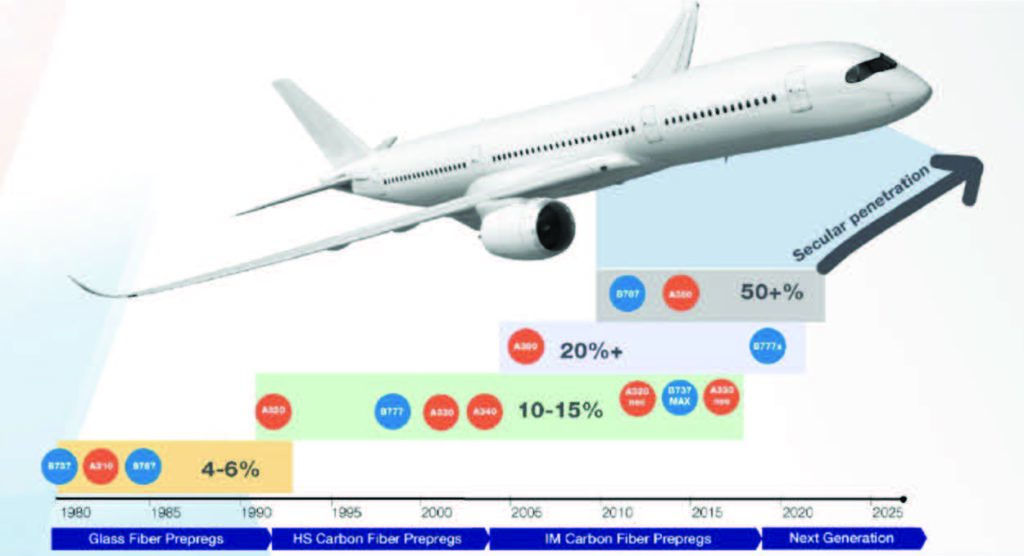
Therefore, defense and aerospace industry;
İs the largest and most profitable market of carbon fiber and is dominated by two major aircraft manufacturers. Just Boeing’s 787 platform and Airbus’s A350-380 platforms consume about 80 percent of carbon fiber demand in aviation.
Existing designs using carbon fiber create operation savings of 3-5% due to lower fuel/maintenance expenses, offsetting higher initial costs.
Designs taking advantage of carbon fiber properties could create savings as high as 20%. For example, an aircraft using 50% CFRP by weight in airframe structure is approximately 20% lighter than conventional aircraft in which 3% of CFRP is used.
Carbon fiber’s main advantage over other materials is its high strength to weight ratio and resistance to fatigue loads.
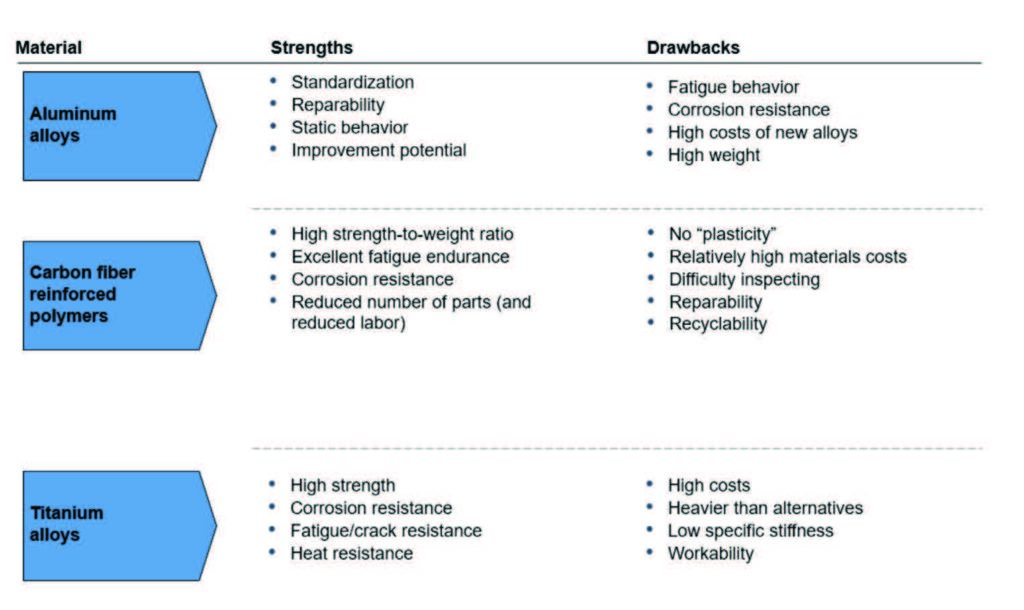
Carbon fibers are classified according to their modulus and tensile strength for the target application in defense and aerospace industry as stated below:

Usage of Carbon Fiber Composites in Commercial Aviation
• Primary Structural Parts: Carbon fiber is used in primary structures (i.e. wings, fuselages, tail cone, engine fan blades etc.). Intermediate and high modulus carbon fibers are mainly used in primary structural parts. This carbon composites account 75 – 85% of the total demand.
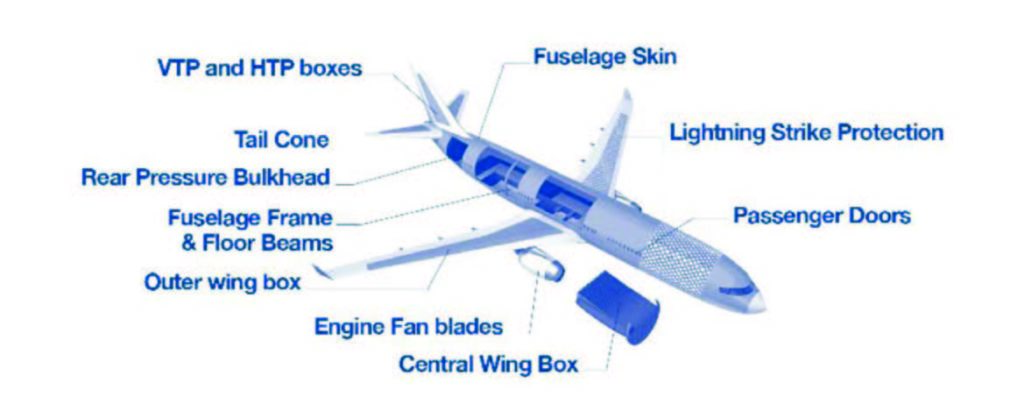
• Secondary Structural Parts: Carbon fiber is used in secondary structural parts (i.e. ailerons, beams, vertical and horizontal stabilizer, drive shafts and brakes). High strength and high modulus carbon fibers are mainly used in secondary structural parts. This carbon composites account 10–15% of the total demand.
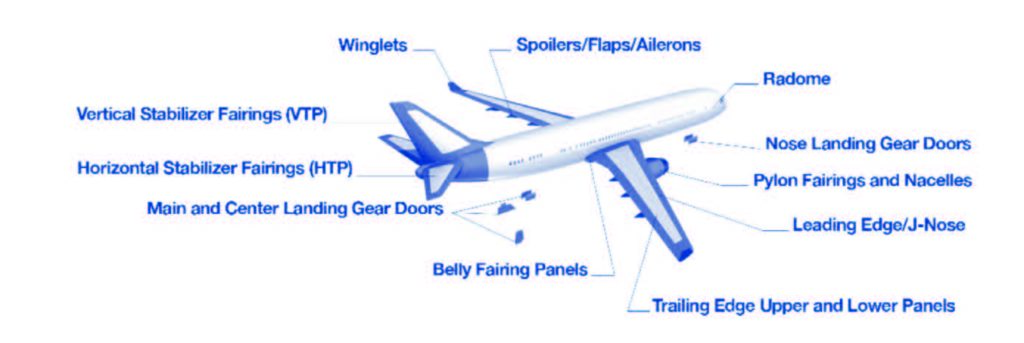
• Interior Parts and Floor Panels: Carbon fiber is used in secondary structural parts (i.e. overhead bins side walls, wall partitions and floor panels. The high strength and standard modulus carbon fibers are used in such parts.
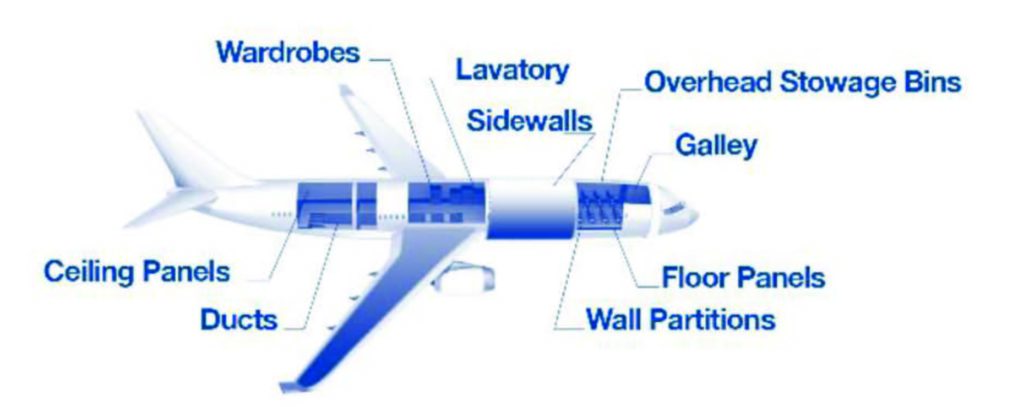
Carbon Fiber Composites in Military Applications
Composite materials used to improve the performance of military aircraft are used in many other military applications. Carbon fibers value propositions make it an ideal material for aircraft, UAV and missile systems.

Carbon fiber composites with their longer life span, lightweight, high chemical and mechanical properties and flexible design possibilities are strongly preferred by aerospace and defense industries due to their superior features.
Considerable benefits offered by composites have yet to be fully exploited and as knowledge and understanding grow, composite materials will play an increasingly significant role.
This role will expand not only as a result of improved material performance, but also as human ingenuity finds more and diverse areas where composite materials can be beneficially and advantageously employed.
Mustafa Koray Özatay – Satış ve İş Geliştirme Müdürü – Sales and Business Development Manager – DowAksa
Referanslar / References
https://www.gminsights.com/industry-reports/aerospace-anddefense
https://www.gminsights.com/industry-analysis/aerospace-avionicsmarket
https://www.appropedia.org/File:Composites01.jpg
https://ihsmarkit.com/pdf/Composites-Aerospace-Applications-whitepaper_264558110913046532.pdfMcKinsey&Company Lightweighting strategy report
https://link.springer.com/chapter/10.1007/978-4-431-55203-1_22
https://www.materialstoday.com/composite-applications/features/hexcels-composites-ready-to-fly-on-the-a350-xwb/
https://www.gurit.com/-/media/Gurit/Datasheets/guide-tocomposites.pdf





